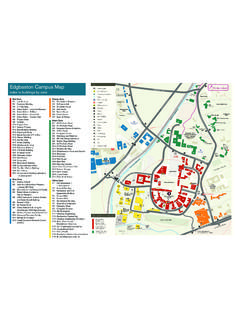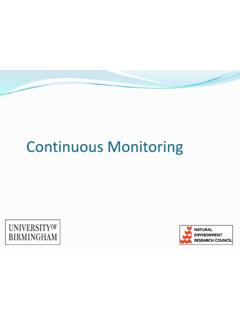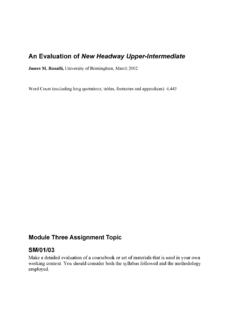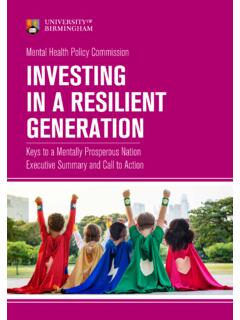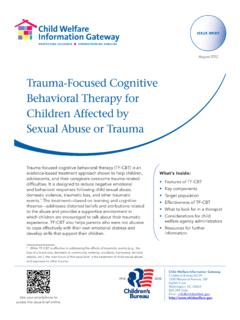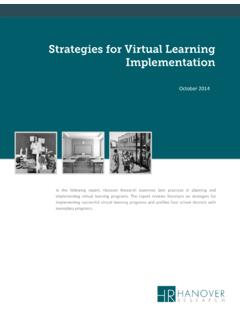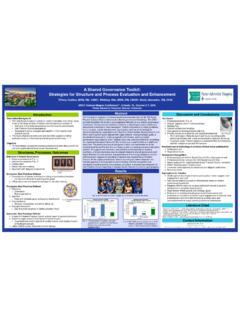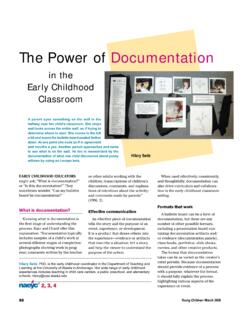Transcription of Evidence-based policing - University of Birmingham
1 Evidence-based policing Mapping police practice and building the evidence base Levin Wheller Research and Analysis Standards Manager 14th June 2019 University of Birmingham The College's role The independent professional body supporting everyone working in policing to reduce crime and keep people safe. Share Support knowledge Set professional and good standards development practice What Works Centre for Crime Reduction Mapping Supporting and the use of sharing evidence what to reduce works crime Identify Assure Share Use Knowledge and evidence comes from different sources 1. Professional experience and judgement 2. Organisational data, facts and figures 3. Scientific/ academic research findings 4. Stakeholder values and concepts All of these are important when police professionals are making complex decisions Is the evidence from the right range of sources?
2 Is the evidence good enough quality? Reference: Barends, E. Rousseau, , & Briner, (2014). Evidence-based Management: The Basic Principles. Amsterdam: Center for Evidence-based management. 4. EBP: A working definition Evidence-based policing is an approach that involves police officers and staff working with academics, partners and colleagues to create, review and use the best available evidence to inform and challenge policing policies, practices and decisions . Many types of research using a range of methods Most appropriate methods for the questions being asked Carefully conducted, peer reviewed and transparent Not applied uncritically Empower officers and staff to ask, challenge and innovate Reference: College of policing : How we promote and share evidence . Professional National policing National Standards body for Curriculum and Guidance policing Levers What Works Selection and Centre Training Assessment Crime Reduction Toolkit: Table format No silver bullets!
3 Context is key . 8. CRT toolkit: Bubble format Violence on the toolkit what works . FILTERS: Prevention; violence; children & young people 6 interventions that work : firearms laws; healthcare screening for DA; hot spots policing ;. problem oriented policing ; street lighting; health visitors 1 promising; relationship violence education FILTERS: Reoffending; violence; children & young people 3 work : CBT; mediation; restorative justice 1 promising; second response to DA. FILTERS: Diversion; violence; children & young people 1 works : therapeutic foster care FILITERS: Gangs all ages POP and Hot Spots work . 10. Vulnerability and violent crime programme: objectives Creation of new evidence to support policing to tackle high priority areas such as protecting vulnerable people, or to support a strategic shift to the prevention of both crime and non-crime related demand.
4 The implementation of initiatives that work' at the local and National level is accelerated, particularly in the area of vulnerability. Use of evidence based approaches in professional practice are embedded within policing culture. Academic VKPP. Advisors College Independent Research evaluators Vulnerability Forces &. Programme & Violent Intervention Board Crime Leads Programme 12. Call for practice (CFP). Two rounds in Q4 2018. Officers and staff across the service invited to submit examples of past, current, or emerging practice VKPP team & College staff promoted the call through engagement with national leads and senior officers 13. Focus of submitted interventions*. Child sex. abuse / exploit. 53. County lines 46. Domestic abuse 41. Gangs 40. Vulner. adults at risk 39. Missing persons 37. Knife crime 32. Mental health 27.
5 Adult sex. offences 19. Stalking & harrass. 10. Honour based FGM 8. Forced marriage 7. Note, individuals could select more than one category to indicate which area their intervention covered 14. Selecting interventions for evaluation 21. 139 CFP 10 included 8 included in shortlisted submissions in phase 1 phase 2. interventions 15. Gangs and Youth Violence Intervention Description Op Divan/ Home and school visits with children where there is intelligence that Op Met Divan they are carrying or at risk of carrying knives. The original scheme was developed in North Yorkshire Police, but a new version of the intervention is now running in a selected borough in the MPS. DIVERT Custody Intervention Coaches embedded in six custody suites across London support approach eligible 18-25 year olds to offer education and employment opportunities and other support CIRV A focussed deterrence approach to violence where individuals are offered a choice to engage with support services, or face increased enforcement activities.
6 16. Vulnerability Intervention Description Think Family Early A multi-agency approach led by PCSOs who work with families Intervention Scheme to understand their key difficulties and identify sources of support. The focus is on prevention, targeting low level problems before they become severe and high risk. Adverse Child A multi-agency approach focussed on supporting young people Experiences/ Trusted who have experienced 4 or more ACEs. Trusted Adult Workers Adult Workers work with local children and adult safeguarding boards and community safety partnerships to deliver the intervention. Joint Agency Approach Joint visits by police & child services that aim to avoid repeated to Neglect child neglect and common assault offences against children. Robust messaging and detailed behaviour contracts are developed with families with the aim of improving care given to children and to raise awareness about the consequences of failing to adhere to the contract.
7 17. Risk Assessment and Management Intervention Description SARA/ SAM Pilot A three-force pilot assessing the application of a police risk assessment and management tools for serial and repeat perpetrators of domestic abuse and stalking. The tools being trialled are SARA V3 and the Stalking Assessment and Management tool (SAM). High Harm Perpetrator The Surrey HHPU uses an algorithm and referral process to Unit identify high harm perpetrators who would not have been managed through other statutory measures such as MAPPA or IOM. 18.
